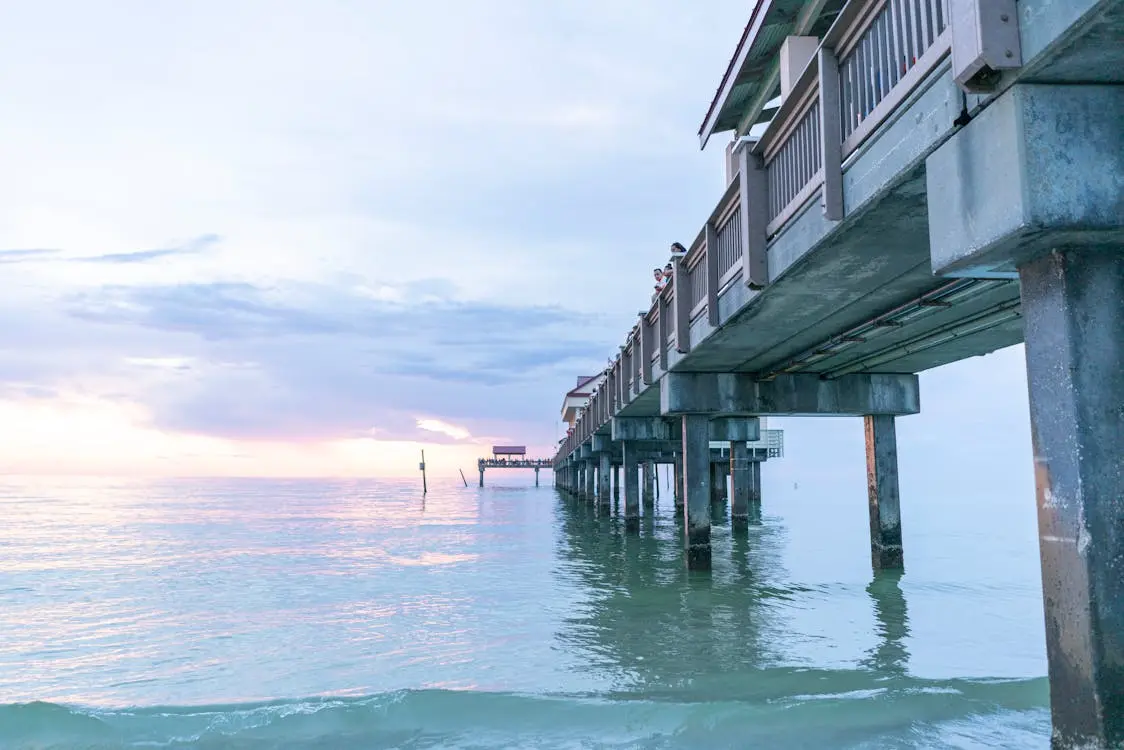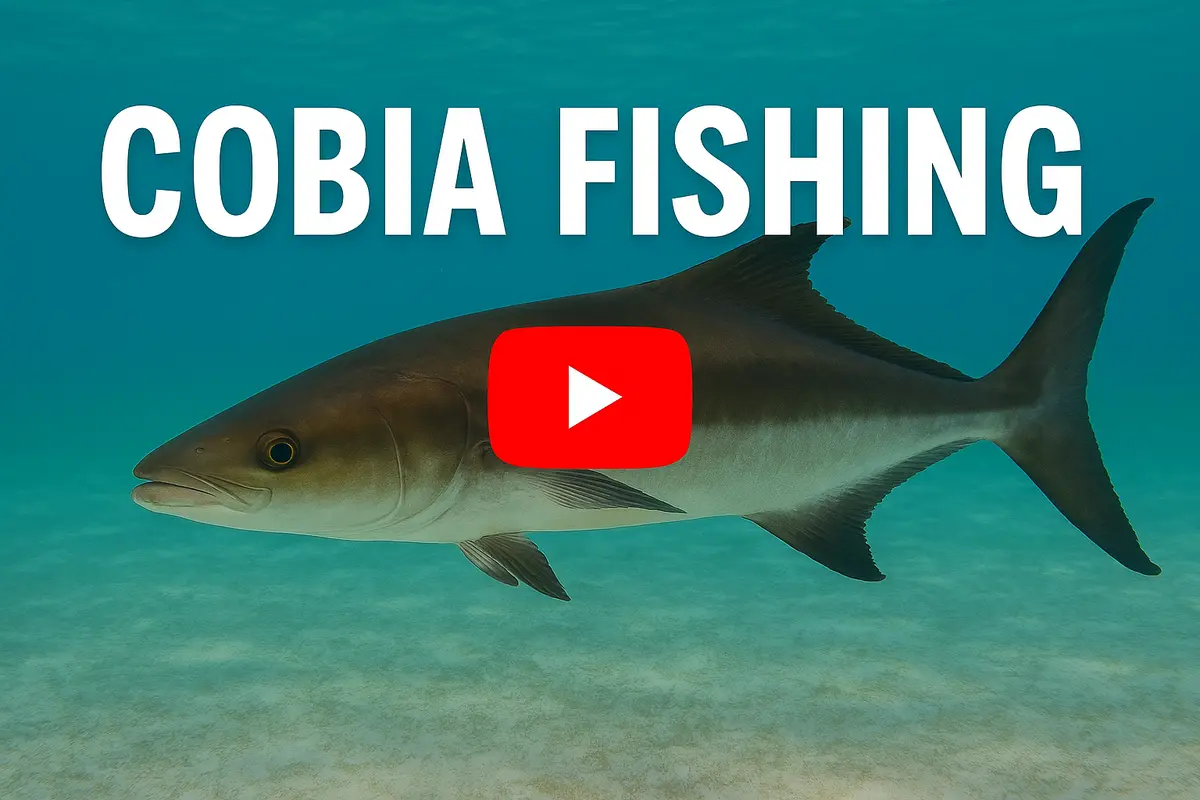Cobia: Habitats - Piers
Table of Contents
Fishing Piers for Cobia

Photo credit: Jared Lung
Overview of Pier Structures and Cobia Behavior
Piers create vertical and horizontal structures—pilings, crossbeams and decking—that cast deep shadow lines and concentrate baitfish. Migrating cobia often use these shadowed areas as ambush points, hovering just below the surface or along drop‑offs created by tidal flows. They key in on schools of small fish or crustaceans that congregate around barnacle‑encrusted pilings, then move in to feed once you present bait or lures.
Seasonal & Environmental Factors
- Time of Year: Generally arrive in early April when water temperatures reach 66–68 °F.
- Migration: Schools move northward along the Gulf Coast into the Panhandle and as far north as Massachusetts in spring, with a secondary fall run.
- Water Temperature: Optimal range between 68–86 °F.
- Water Clarity: Clear to moderately clear water enhances sight‑fishing and jig visibility.
- Tides & Currents: Incoming tides concentrate bait along pilings; slack high tide often holds cobia near the structure.
- Cloud Cover & Wind: Overcast skies and a light to moderate wind break surface glare and help mask anglers, encouraging cobia to feed in shaded areas.
Targeting Cobia at Piers
Bait Selection
- Live Pogies or Pinfish – Free‑lined under the pier.
- Live Eels – Tipped on a circle hook for a natural presentation.
- Cut Mullet Strips – Fished on a fish‑finder rig along the bottom.
- Crab Clusters – Offered free‑drifting to mimic natural forage.
Rigging Techniques
- Free‑Line Rig: 6/0 circle hook tied to 40–60 lb fluorocarbon leader, no weight—allows live bait to swim freely.
- Knocker Rig: Slip 2–4 oz sinker on main line, 18 in leader to 6/0 hook—keeps bait at target depth.
- Fish‑Finder Rig: 3–4 oz egg sinker above a swivel, 2 ft leader to a 6/0 circle hook—ideal for cut bait on the bottom.
- Bucktail Jig Rig: 1-4oz jig head with curly‑tail grub, 2 ft leader—bounce or jig vertically around pilings.
Gear Recommendations
Use medium‑heavy to heavy spinning gear for most pier setups: quality rods in the 7.5–8 ft range with fast tips, paired with 6000–6500‑series reels spooled with 50–60 lb braided line and a 60 lb fluorocarbon leader.
Lure Selection & Techniques
| Lure Type | Retrieve Style | Rod & Reel Setup |
|---|---|---|
| Bucktail Jig (1-4oz) | Lift‑and‑drop jigging | 7.5 ft MH fast rod, 5000‑series reel, 40 lb braid, 50 lb leader |
| Plastic Eel (6–8 in) | Steady near‑surface retrieve | 7.5 ft M fast rod, 6000‑series reel, 50 lb braid, 60 lb leader |
| Metal Spoon (1–3 oz) | Erratic, quick jig‑like retrieve | 7 ft M rod, 5000‑series reel, 40 lb braid, 50 lb leader |
| Soft Plastic Grub | Slow, bottom‑bounce retrieve | 8 ft MH fast rod, 6500‑series reel, 50 lb braid, 60 lb leader |
Community & Expert Tips
- Be Rigged & Ready: Have baits and rigs set up before sighting fish—cast 20 ft past and retrieve back through the school.
- Heavy Braid for Abrasion: 65 lb braid on a medium‑heavy rod helps muscle cobia away from barnacles and pilings.
- Use Braid Wisely: Thinner braid increases spool capacity and casting distance, but watch for chafe around structure.
- Cover the Water Column: If fishing with a partner, one uses a plug while the other throws a jig or bait to maximize strike chances.
Happy pier‑cobia fishing! Tight lines.

Thumbnail from Cobia fishing on the Pier!
Search “fishing piers for Cobia tips” on YouTube
Related Search Terms
| Search Term | Thumbnail |
|---|---|
| Best pier baits for Cobia |  |
| Cobia pier lures |  |
| Cobia pier fishing tips |  |
| Pier tactics for Cobia |  |
Ask AI for More Info
Try our AI assistant for free—sign up to access this powerful feature.
👉 Sign Up to Ask AI